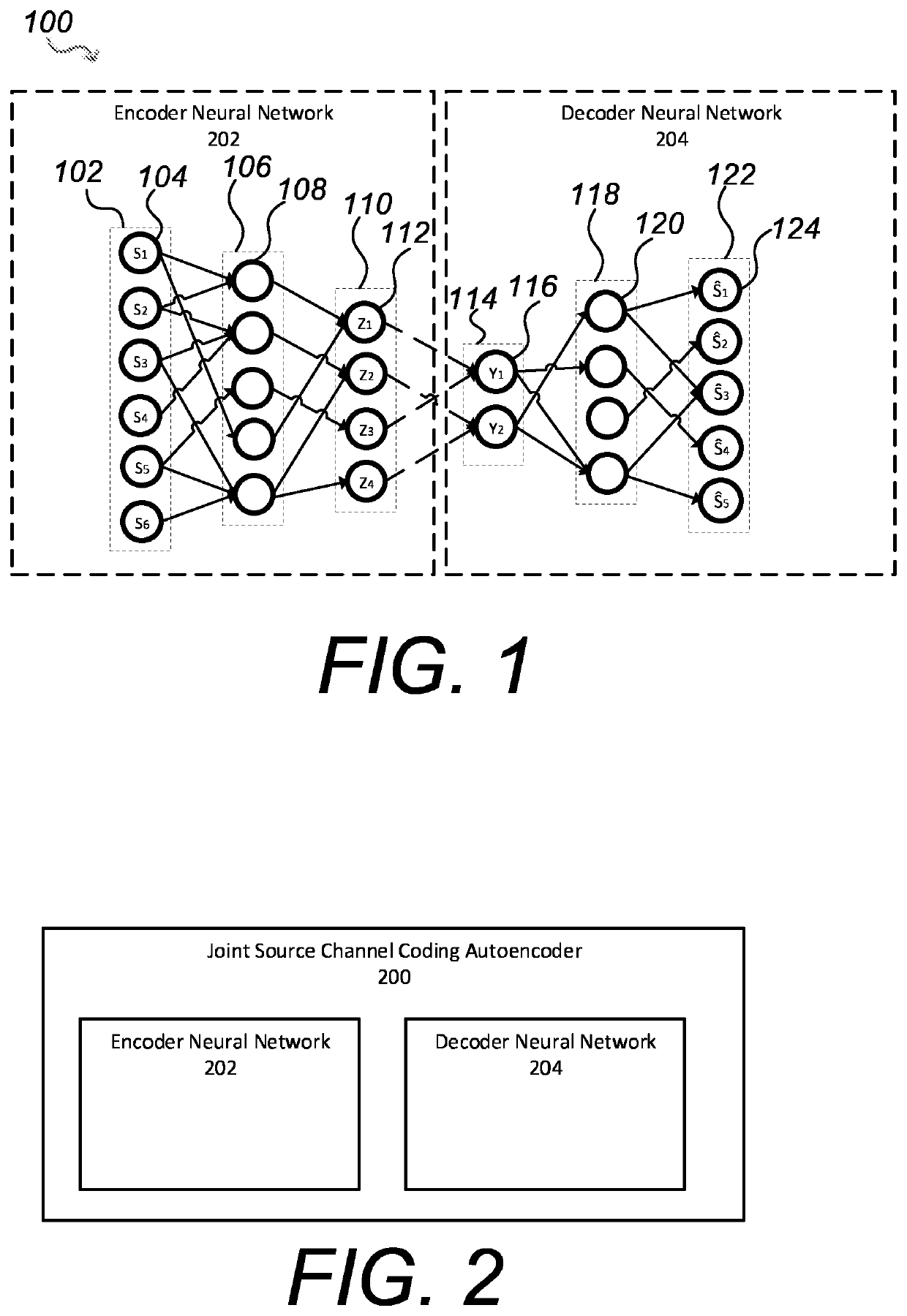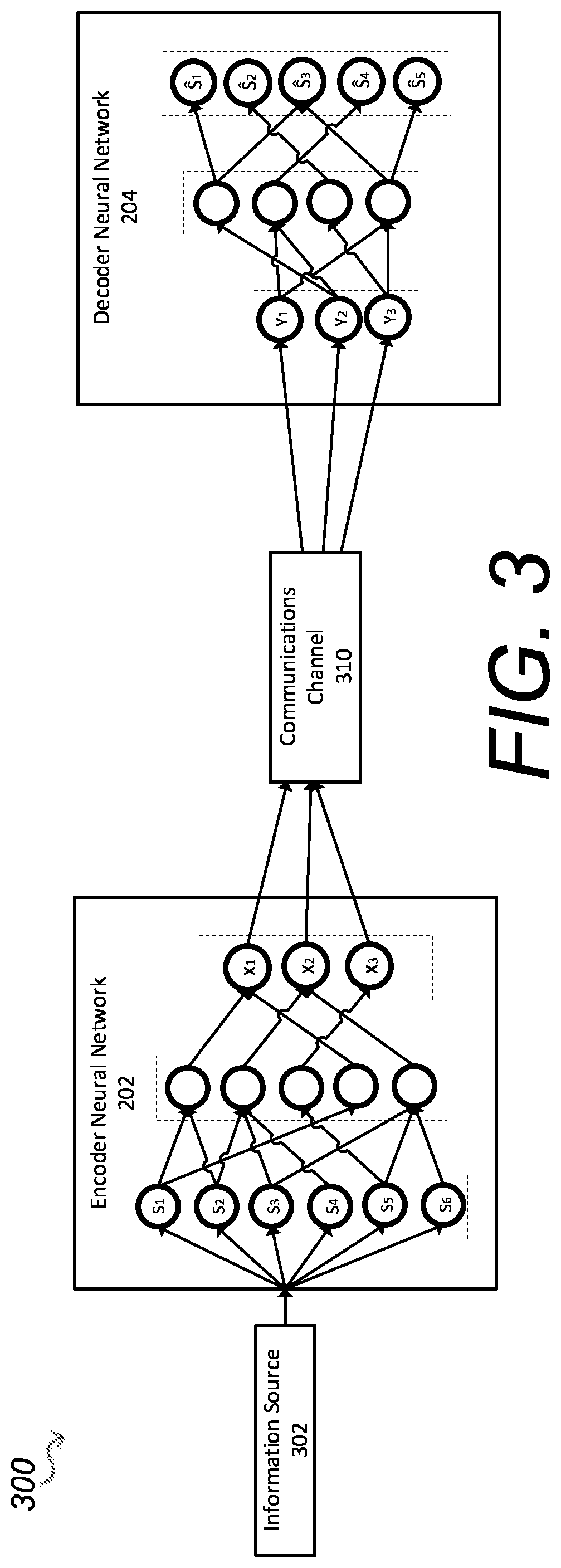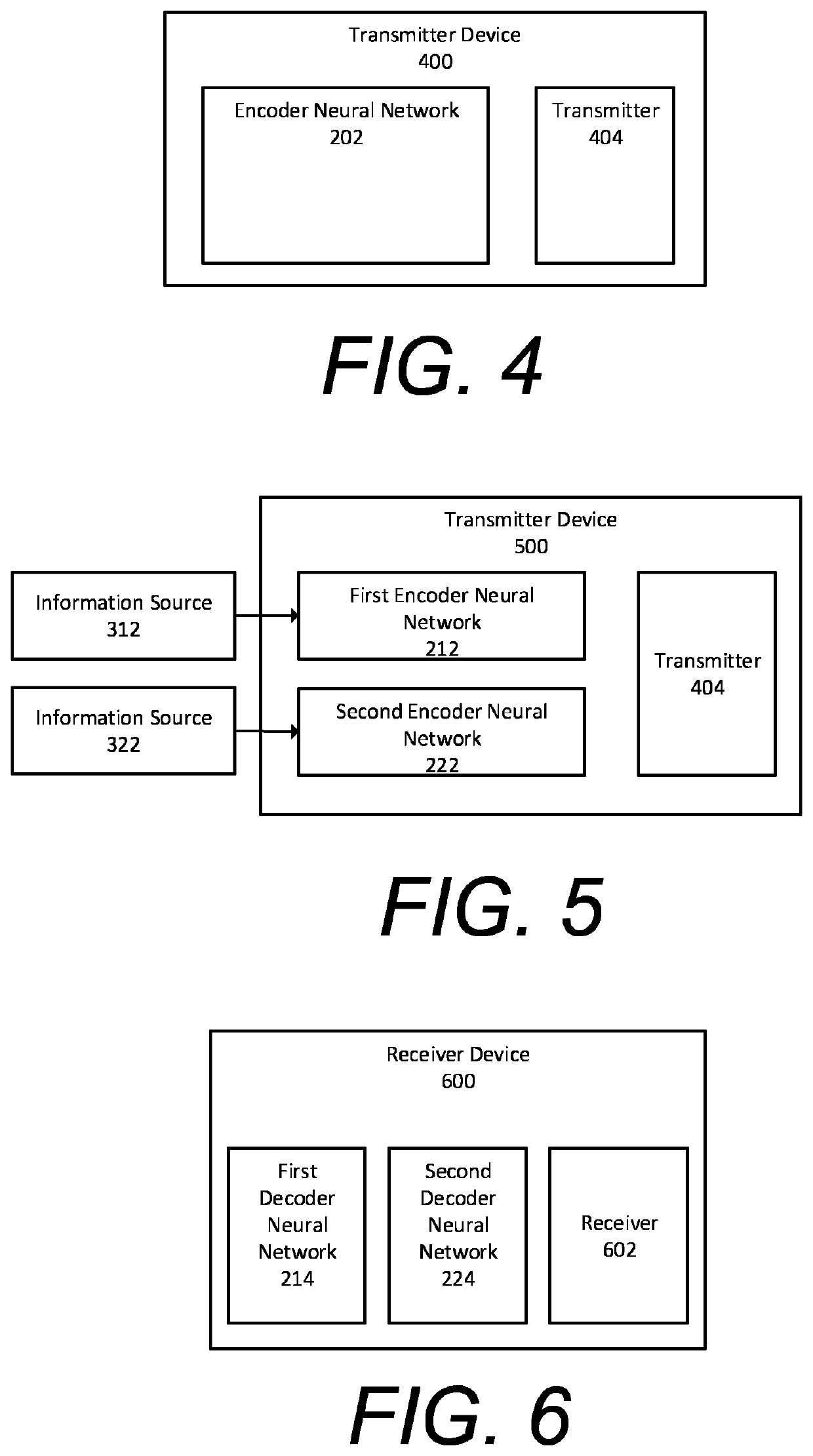Joint source channel coding based on channel capacity using neural networks
a neural network and channel capacity technology, applied in the field of data communication systems, can solve the problems of high complexity of separate source and channel coding, inefficient data transmission in practice, and dreaded data redundancy, etc., to reduce data redundancy, consume large amounts of energy, and drain the energy resources of battery-powered devices
- Summary
- Abstract
- Description
- Claims
- Application Information
AI Technical Summary
Benefits of technology
Problems solved by technology
Method used
Image
Examples
Embodiment Construction
[0158]The present disclosure describes a communication system for conveying information from an information source across a communications channel using a joint source channel coding autoencoder, the communication system producing a high fidelity reconstruction of the information source for different information sources and different channel noise.
[0159]The communications channel is used to convey information from one or more transmitters to one or more receivers. The channel may be a physical connection, e.g. a wire, or a wireless connection such as a radio channel. The communications channel may be an optical channel or a Bluetooth channel. There is an upper limit to the performance of a communication system which depends on the system specified. In addition, there is also a specific upper limit for all communication systems which no system can exceed. This fundamental upper limit is an upper bound to the maximum achievable rate of reliable communication over a noisy channel and i...
PUM
 Login to View More
Login to View More Abstract
Description
Claims
Application Information
 Login to View More
Login to View More - R&D
- Intellectual Property
- Life Sciences
- Materials
- Tech Scout
- Unparalleled Data Quality
- Higher Quality Content
- 60% Fewer Hallucinations
Browse by: Latest US Patents, China's latest patents, Technical Efficacy Thesaurus, Application Domain, Technology Topic, Popular Technical Reports.
© 2025 PatSnap. All rights reserved.Legal|Privacy policy|Modern Slavery Act Transparency Statement|Sitemap|About US| Contact US: help@patsnap.com



